

Wool Museum
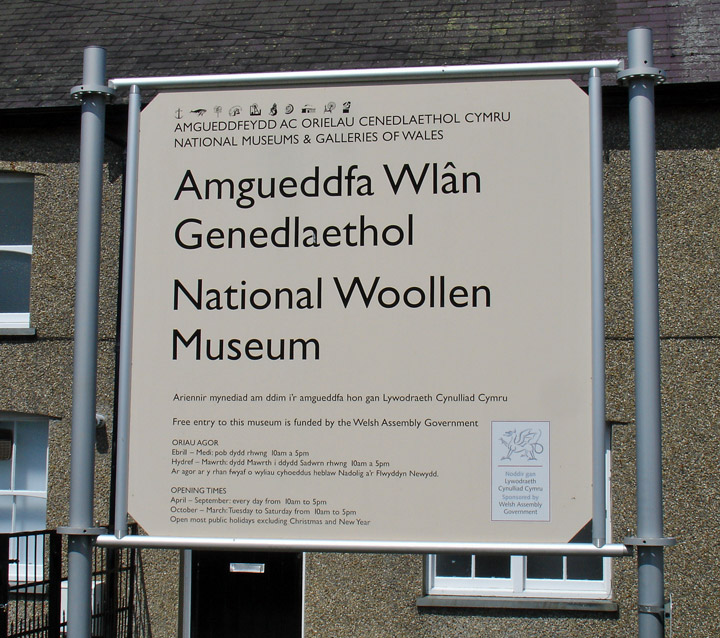
National Woollen Museum
In the heart of West Wales. the Museum of the Welsh Woolen Industry tells the fascinating story of the most traditional of rural industries: wool.
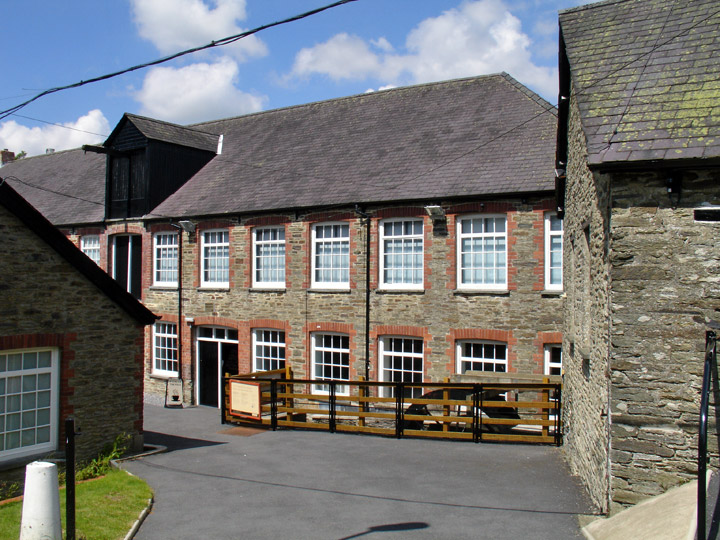
the Wool Museum
When you enter the Museum you will find centuries-old techniques and technology alongside a thriving, working woolen mill, still producing for the modern market. Forty mills once clustered around Dre-fach Felindre. the Huddersfield of Wales.

the story starts with the shepherd
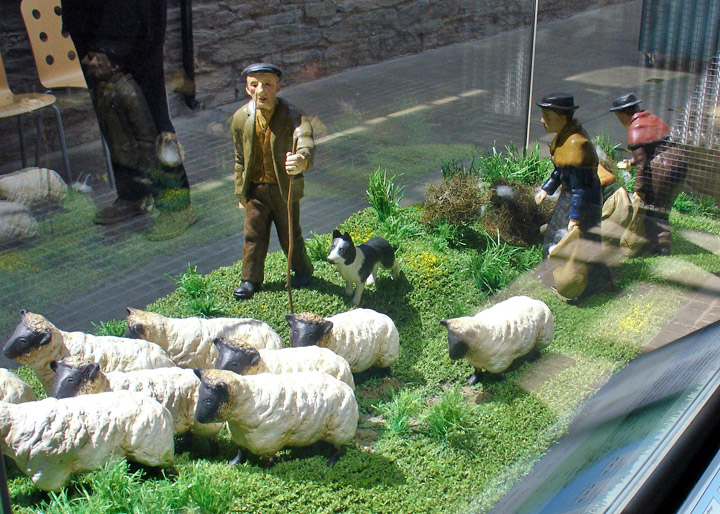
and the sheep
The Museum tells the story of this community which was dependent fur its livelihood on spinning and weaving.

the wool is cleaned
Forgotten skills, old ways of life. and newly-woven traditional fabrics can all
be seen. The museum houses working historical exhibits and offers visitors
regular demonstrations of the hand-carding. spinning, weaving and dyeing
processes that turn fleece into fabric.
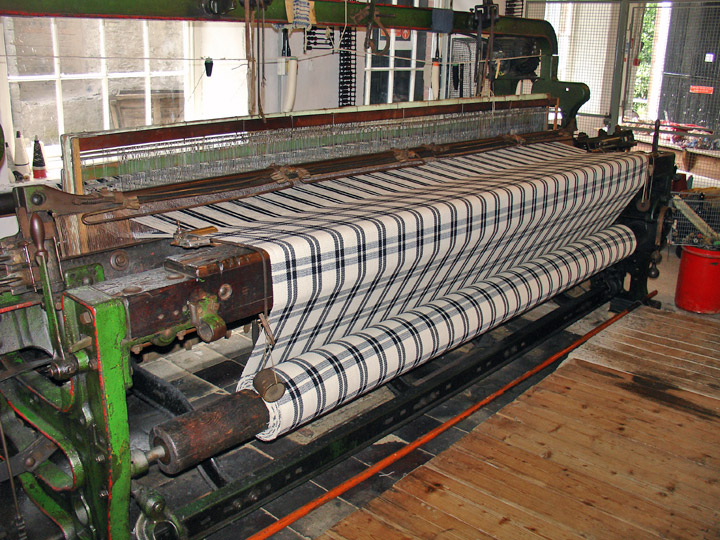
to be woven into cloth
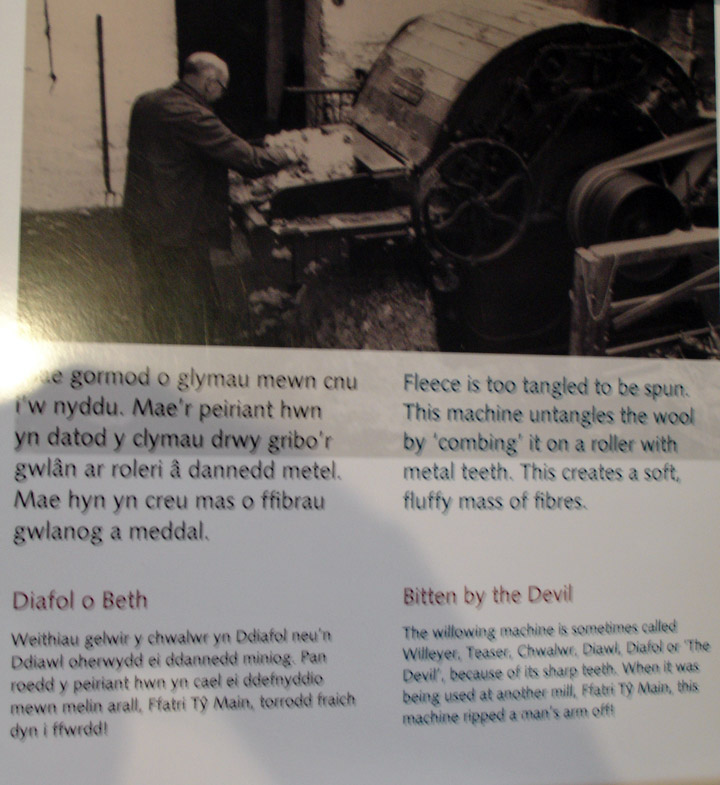
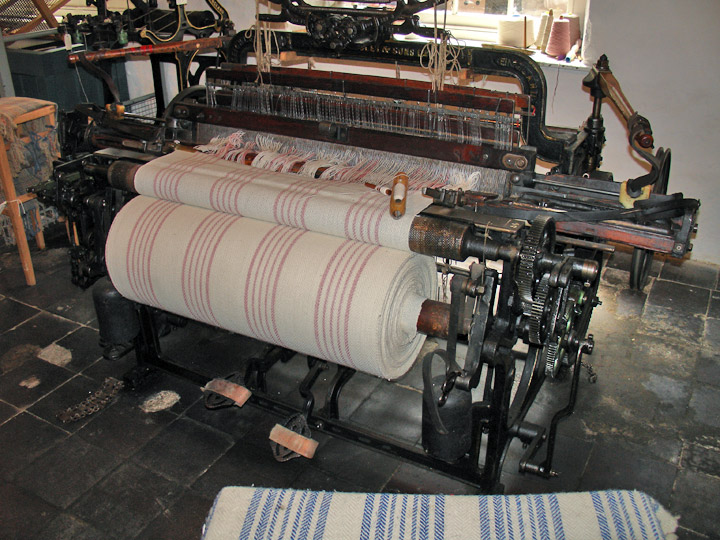
loom for producing cloth
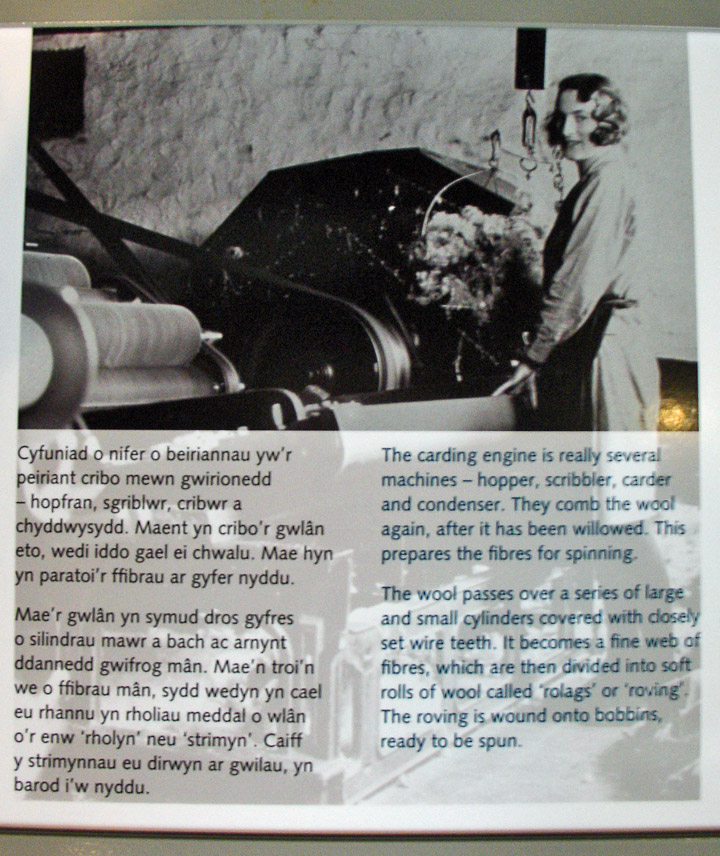
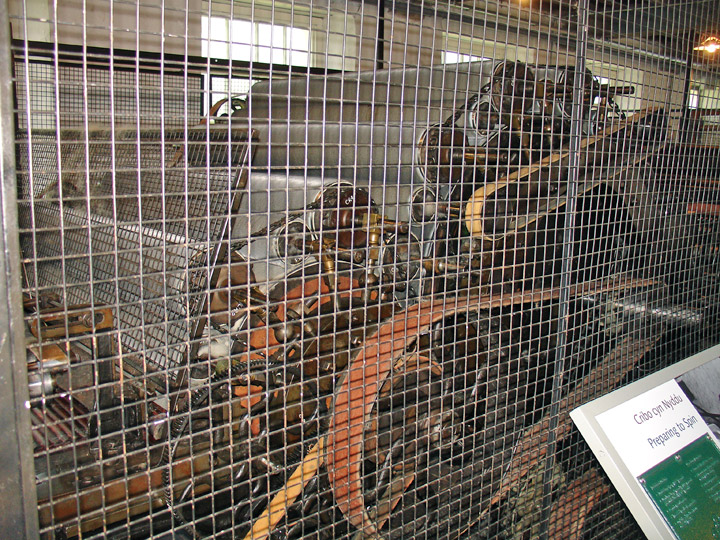
carding machine
Nineteenth-century carding and spinning machinery is operated to produce yarns that are then woven on hand and power looms to make reproduction fabrics.
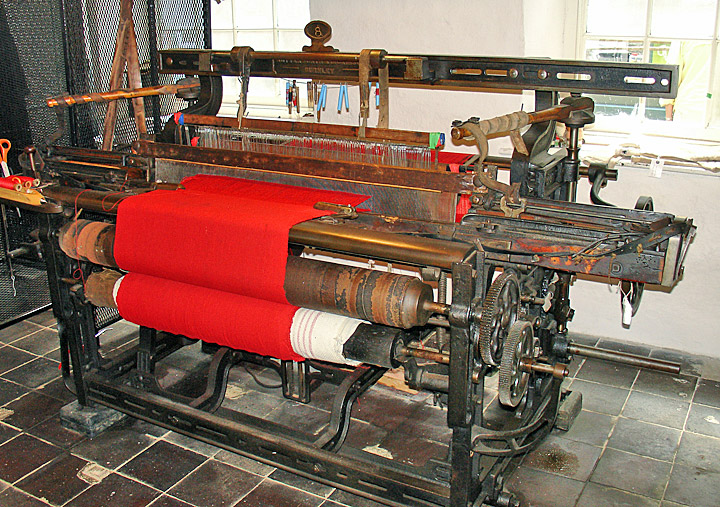
power loom
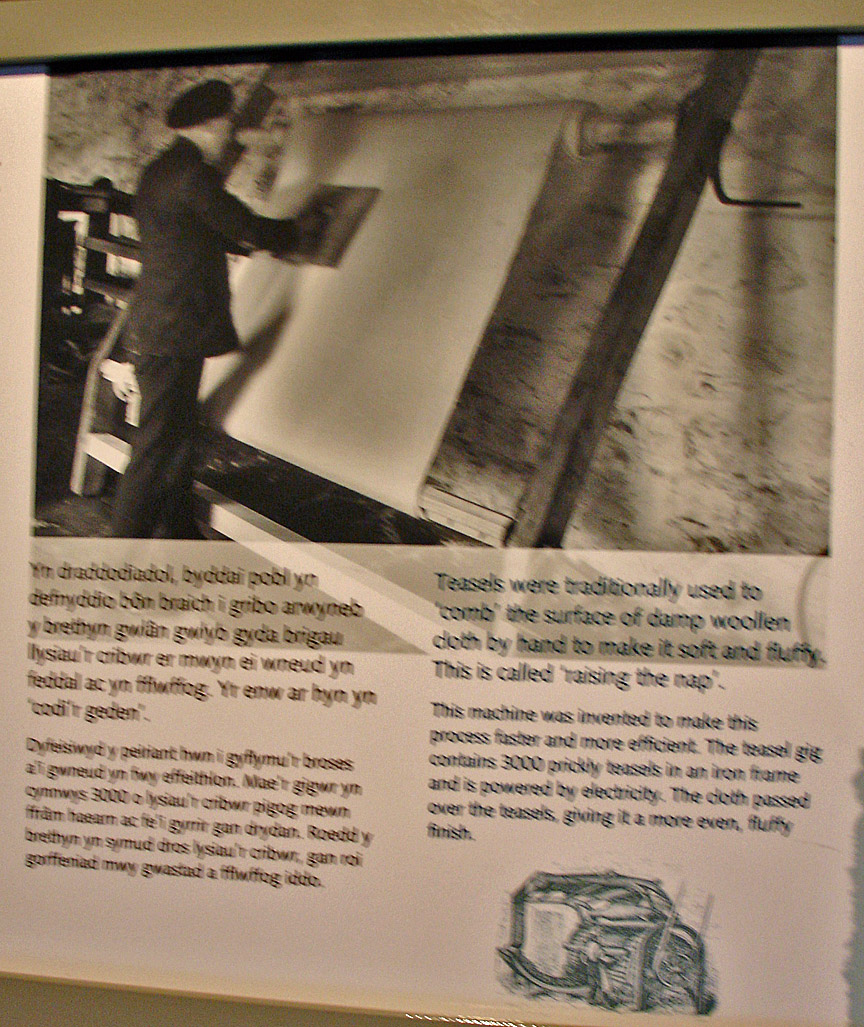

combing machine
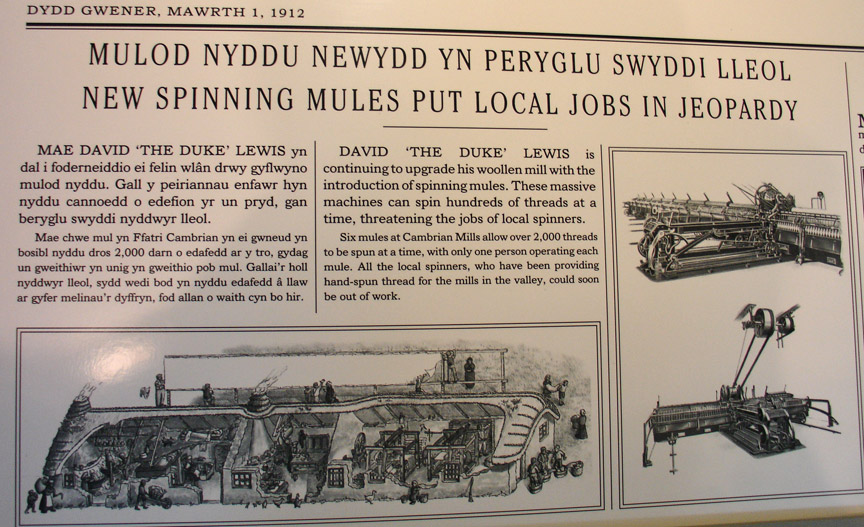
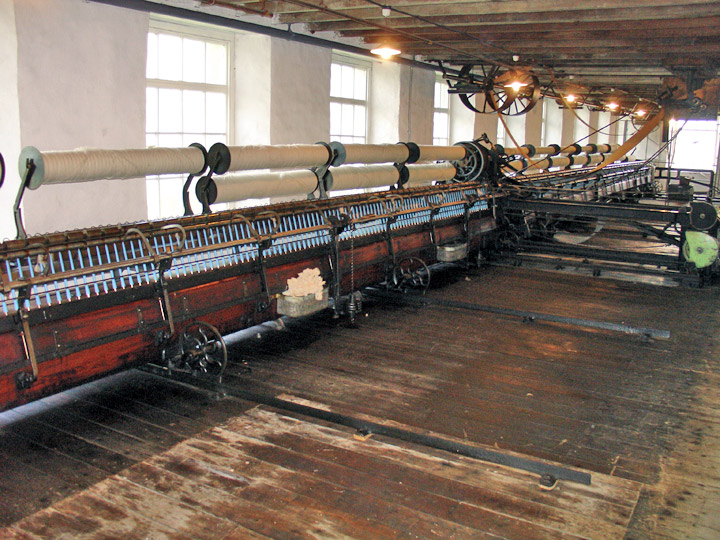
spinning mule
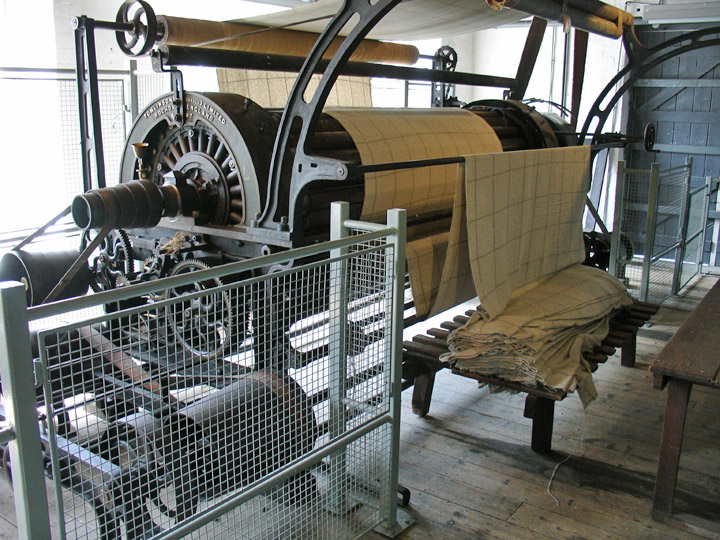
tenter machine

The 1831 census states that in Carmarthenshire there were 260 male weavers of
over twenty years of age, 'engaged in weaving woolen yarns produced by domestic
industry’: no more than 14 were found in any one place. In 1850. the power
loom was invented: as a result of this new invention and that of the new fulling
machine, the industry flourished until the end of the century as never before.
There was a rapid increase in the number of factories. and between 1860 and 1900
about 21 factories appeared in the two parishes of Llangeler and Penboyr alone.
It was this period which saw the change from the domestic to the factory system
in Carmarthenshire. The great deve1opment of mining and of the metallurgical
industries in the south-east of the county and in Glamorgan provided a ready
market for, and greatly encouraged, the woolen trade. On
the other hand, with the specialization in the mining and metallurical
industries, the woolen industry decayed in the south-east of the county, so that
towards the end of the century practically every factory within Carmarthenshire
was to be found to the north arid west of a line drawn from Kidwelly to
Llandovery. with a marked concentration along the Teify and its tributaries.
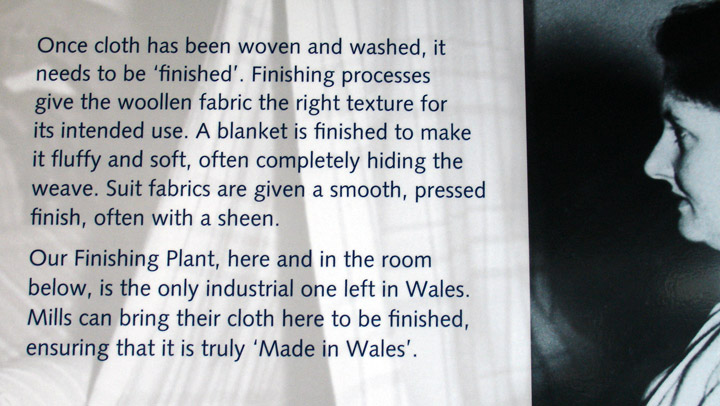
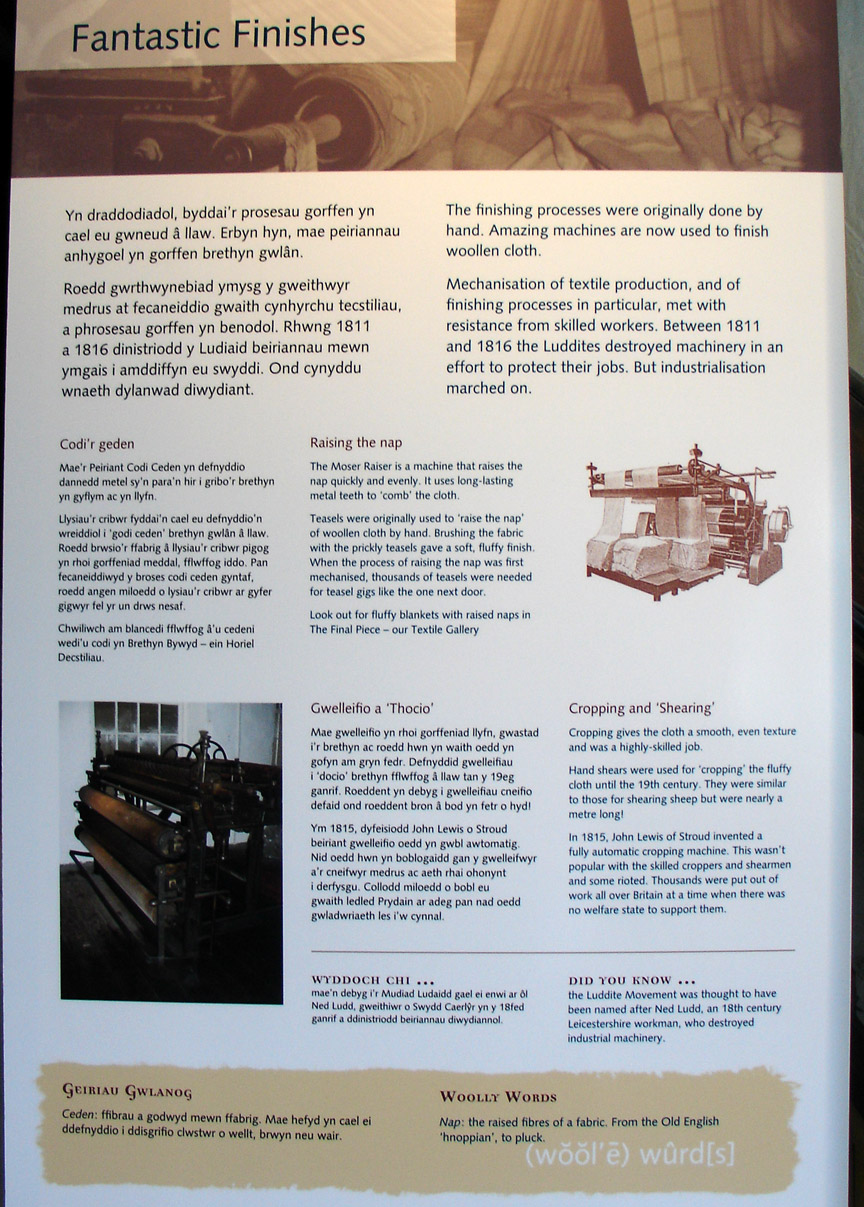
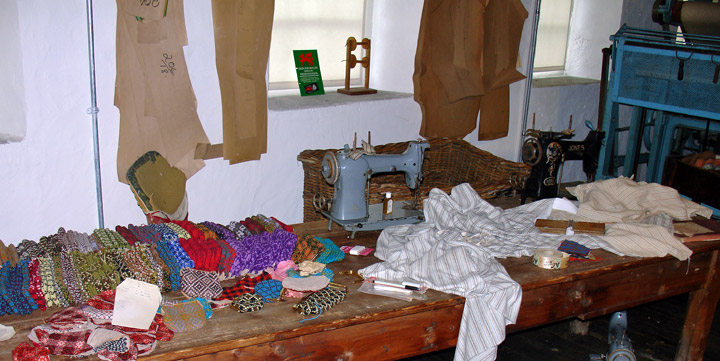
hand workshop
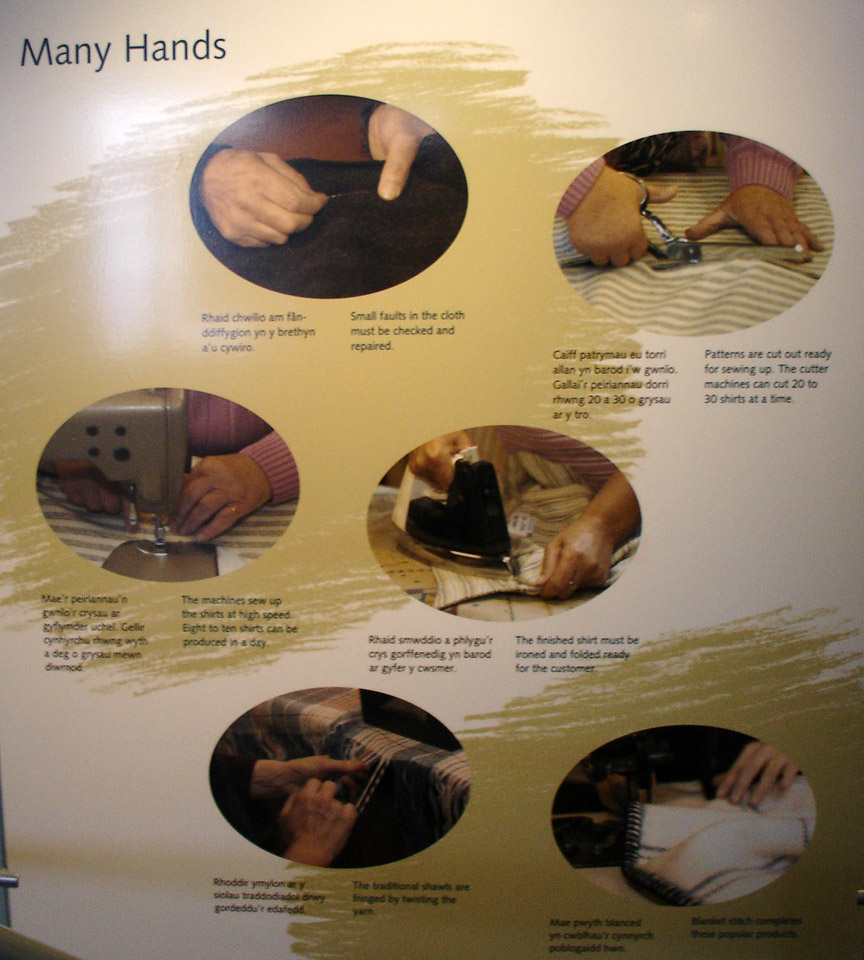
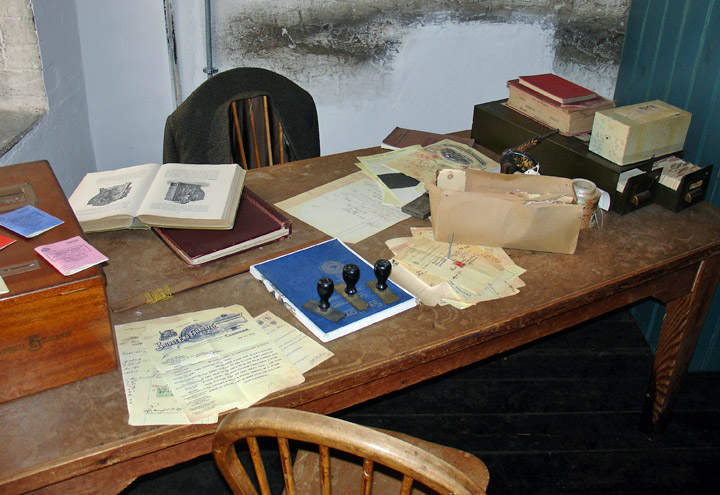
supervisor and inspection

rotary steam press
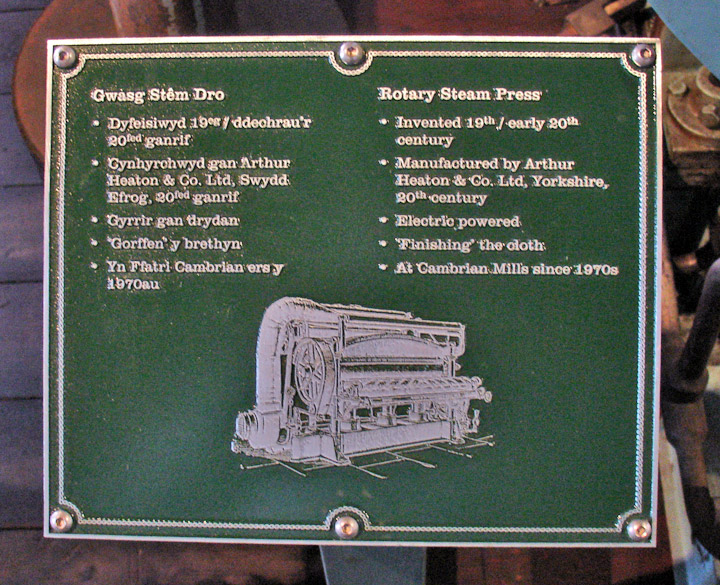
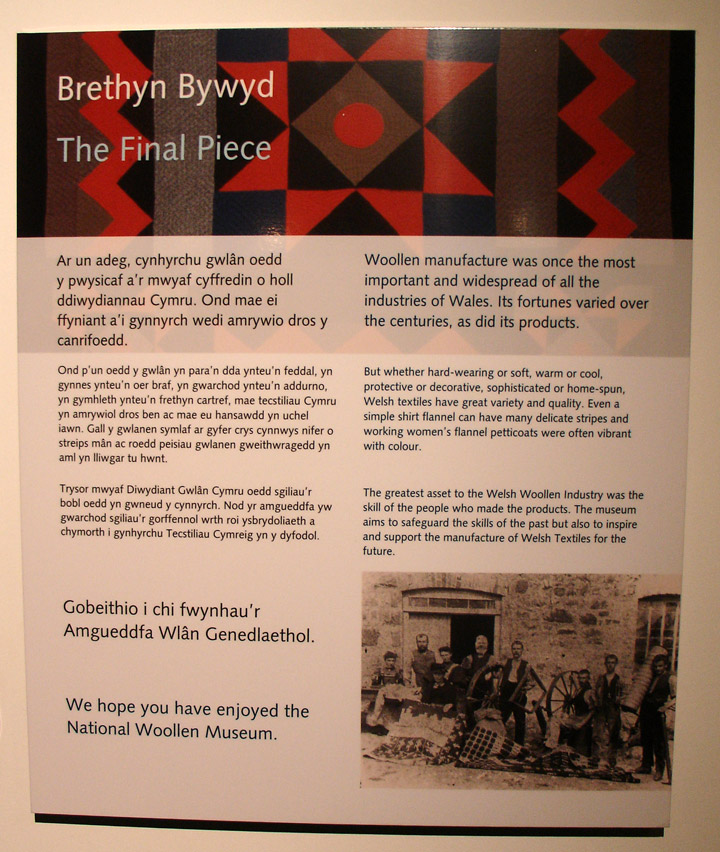
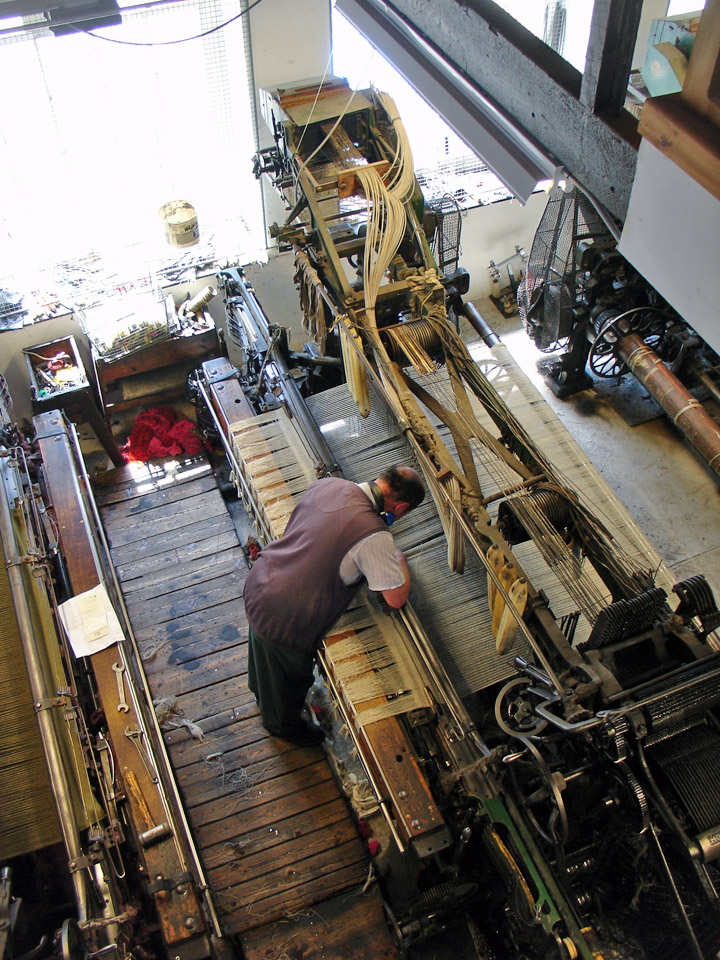
an operating loom
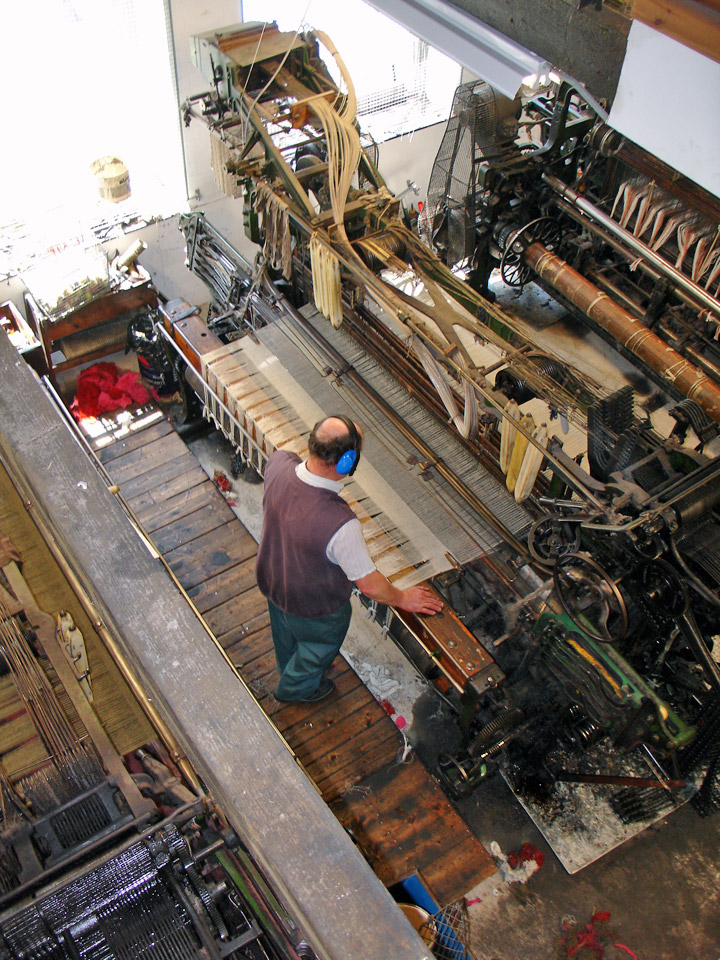
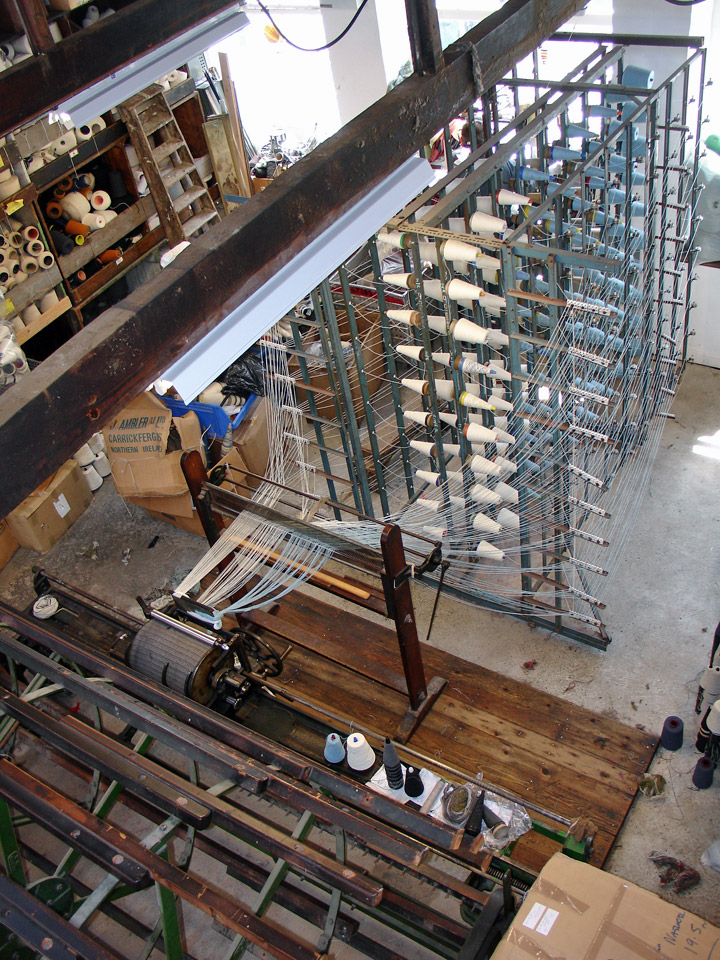
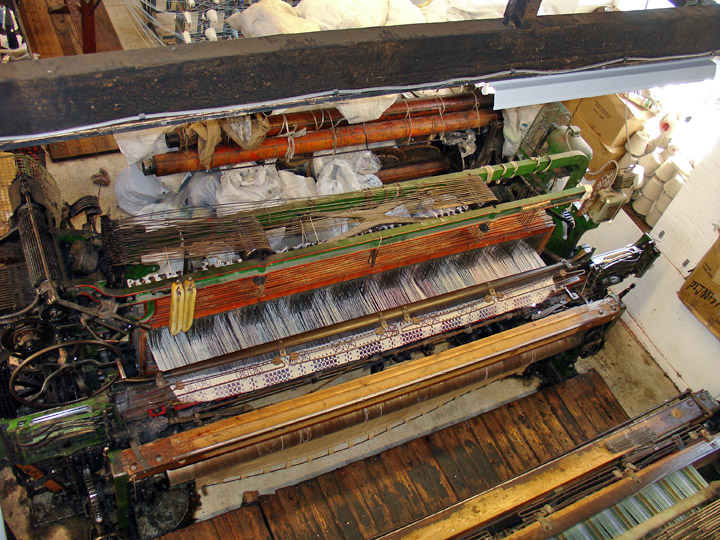
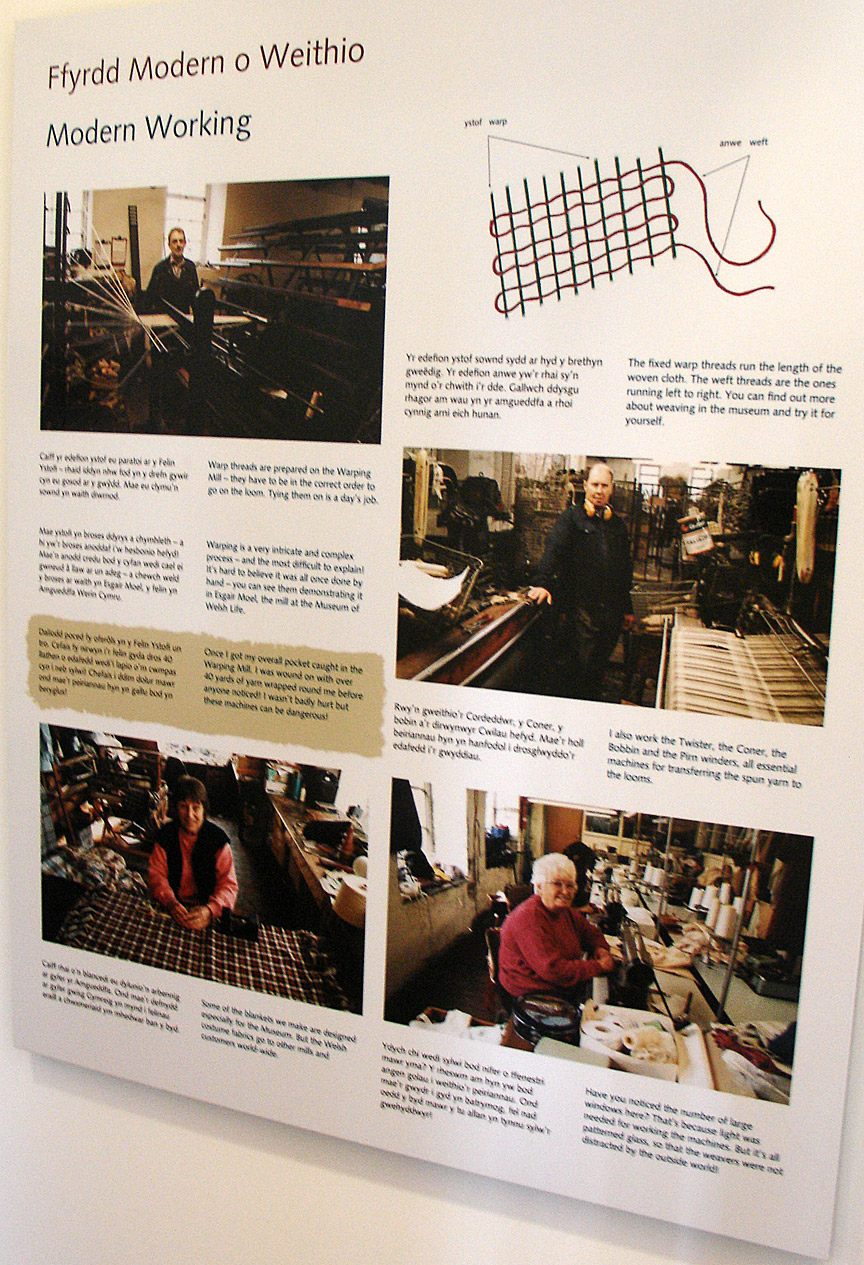
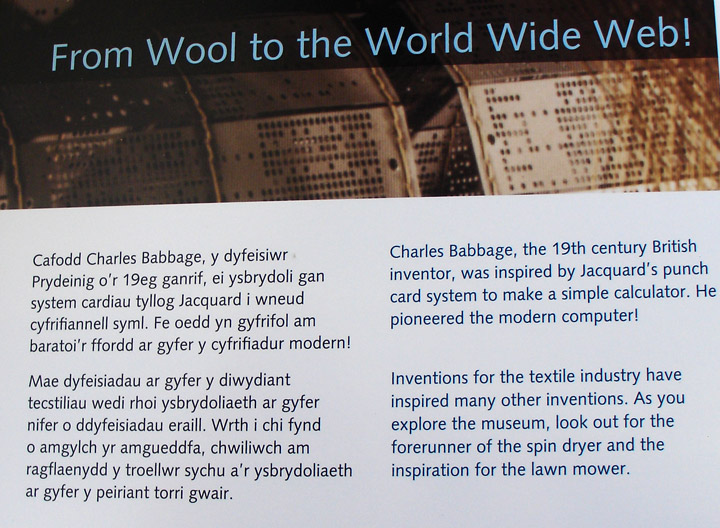

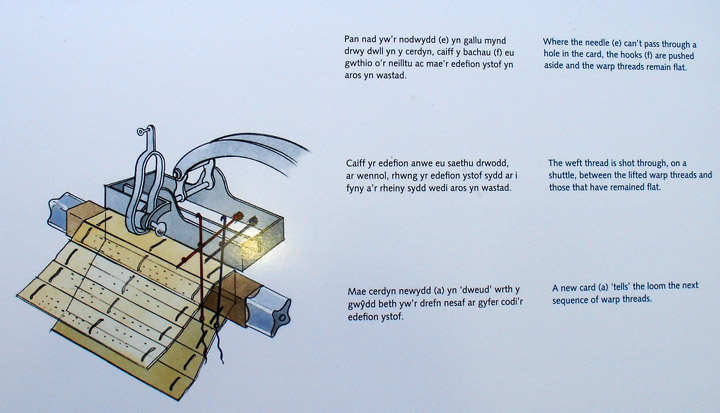
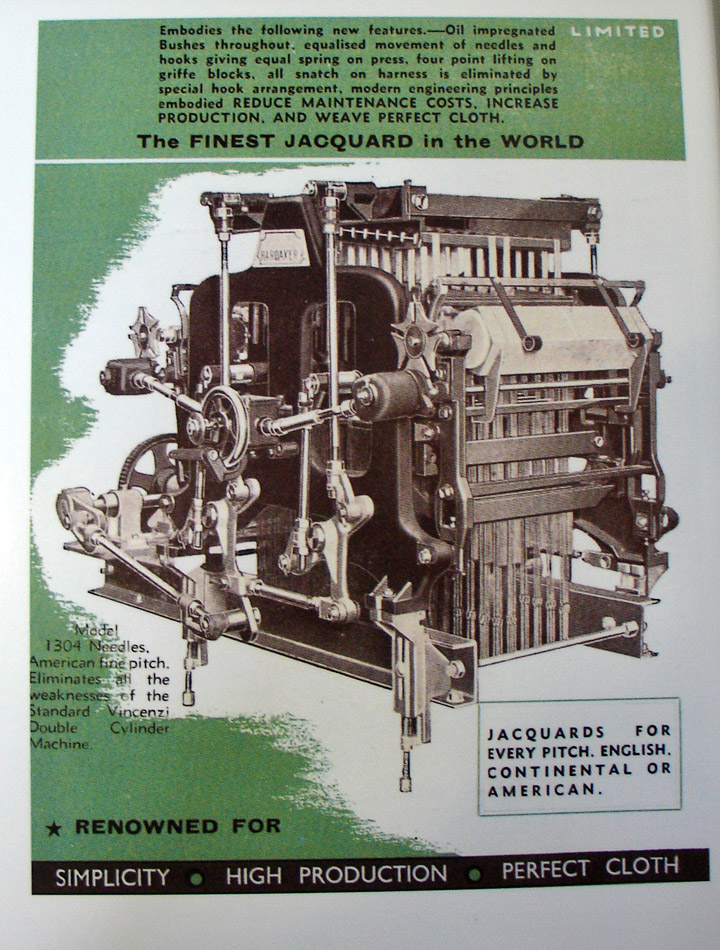
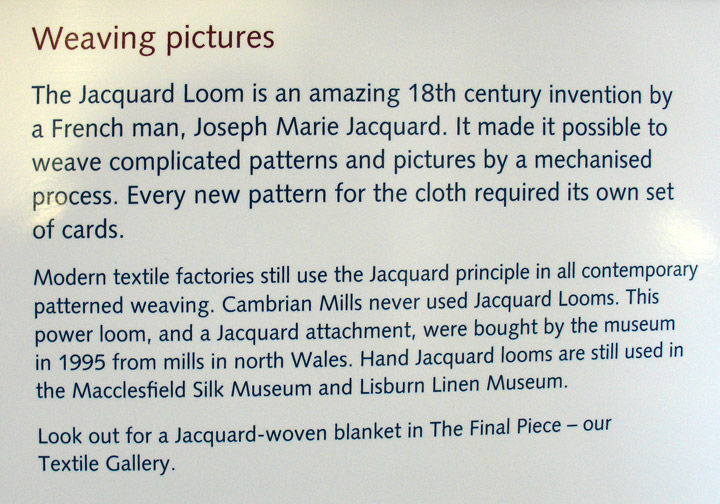
Two major types of factory appeared. They may for convenience be classified as
a) rural general factories, and b) non-rural factories. The rural factors,
usually situated at the junction of highland and lowland at about 500 feet above
sea-level, near a stream, had fairly good access to the surrounding highland and
to the industrial south. A good example is Llanpumsaint. Such a factory was in a
central position for receiving the local supplies of wool. and also at a
convenient point for obtaining supplies of the finer English wool. Although
these factories would usually produce a wide variety of products. such as
blankets. quilts, carthenni, tweeds. and knitting-yarn. --- grey flannel
for miners and industrial workers made up 75% of the output. The non-rural
factory was usually of a larger type. employing between 50 and 100 people: it
had good railway or road facilities. Such were those at Carmarthen. Drefach.
Pentrecourt. Newcastle Emlyn, and Henllan. These. like the others, produced a
variety of products. but specialized in the production of fine flannel for
shirting, mainly from fine English or foreign wool, for they used little of the
coarser local wool. They disposed of their goods wholesale, rather than by the
more or less retail system of the rural factories.

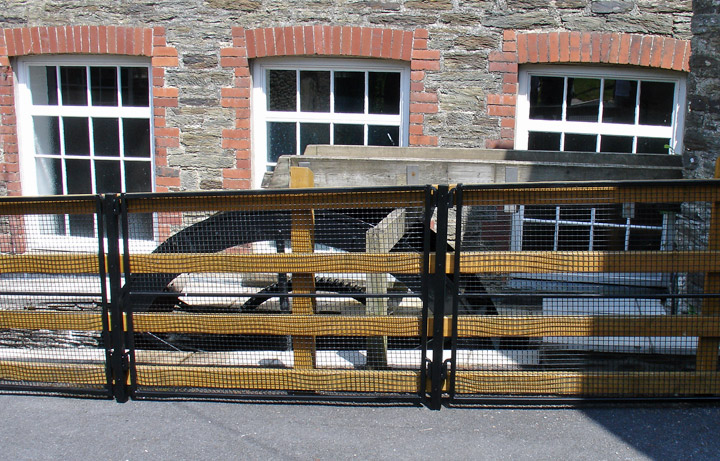
the original water wheel power
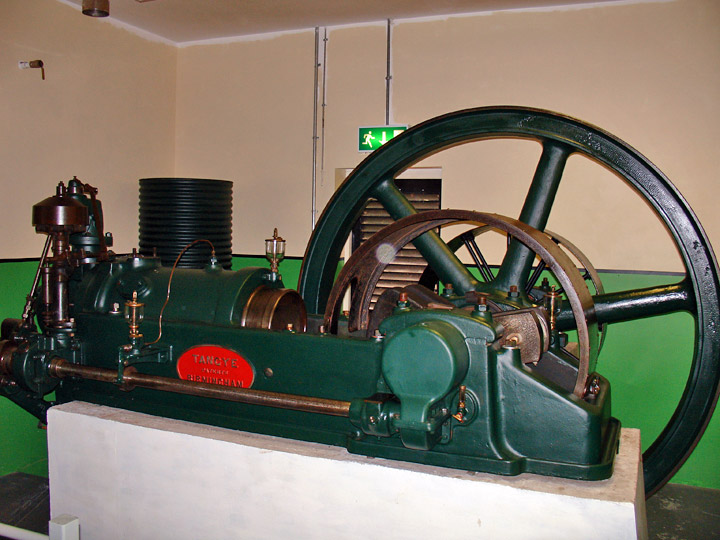
replaced by the gas engine
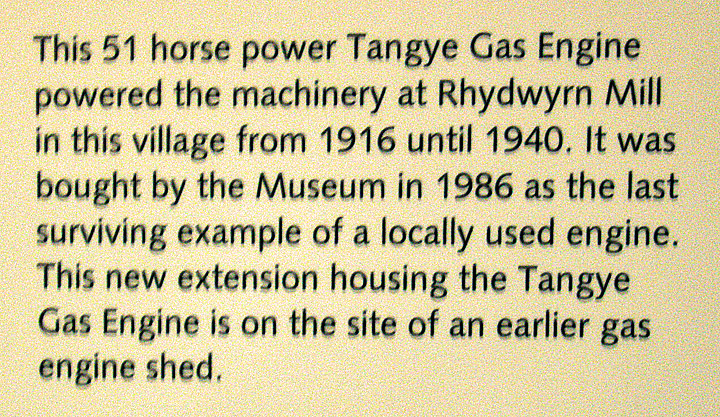
Return to Wales Elderhostel page